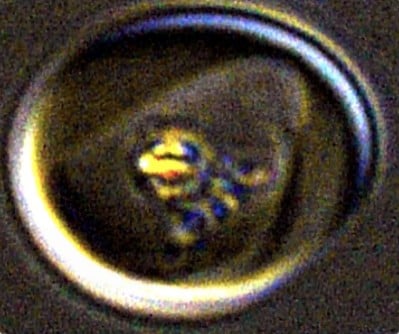URGENT UPDATE: New research reveals the reason behind the chaotic spinning of iron crystals in the Plasmodium falciparum malaria parasite, a phenomenon that has puzzled scientists for decades. The breakthrough, announced by a team at the University of Utah, shows that these tiny crystals are propelled by the breakdown of hydrogen peroxide, a process similar to rocket propulsion.
The findings, published in PNAS, have significant implications for developing new malaria treatments and advancing nanotechnology. As researchers unravel this mystery, they highlight the urgent need for innovative solutions against a disease that affects millions worldwide.
Every cell of the malaria parasite is filled with microscopic iron crystals that exhibit a frenetic motion, akin to change rattling in an overclocked washing machine. For years, the purpose of this motion remained a blind spot in parasitology. “People don’t talk about what they don’t understand,” says Paul Sigala, PhD, an associate professor at the Spencer Fox Eccles School of Medicine. “This has been a mystery for decades.”
The research team discovered that the spinning motion is triggered by the decomposition of hydrogen peroxide into water and oxygen, releasing energy and allowing the crystals to spin. “This hydrogen peroxide decomposition has been used to power large-scale rockets,” explains Erica Hastings, PhD, postdoctoral fellow in biochemistry. “But it has never been observed in biological systems until now.”
This discovery is crucial because hydrogen peroxide is toxic to cells. The researchers suggest that the spinning crystals may help the malaria parasite rid itself of excess hydrogen peroxide, preventing potential damage. Additionally, this motion may facilitate the parasite’s ability to store iron efficiently, a vital process for its survival.
The implications of this research extend beyond malaria treatment; it opens avenues for developing microscopic robots. The concept of self-propelling metallic nanoparticles could revolutionize drug delivery and industrial applications. “Nano-engineered self-propelling particles can be used for a variety of applications,” Sigala states, emphasizing the potential for innovation.
Moreover, targeting the unique mechanism of these crystals could lead to new antimalarial drugs. “If we can block the chemistry at the crystal surface, that alone might be sufficient to kill parasites,” Sigala asserts. This approach reduces the likelihood of side effects in humans, as the drugs would focus on mechanisms distinct from human biology.
This research holds the potential to make a profound impact on global health, especially in regions heavily affected by malaria. With millions of infections annually, advancements in treatment could save countless lives.
As the scientific community delves deeper into this phenomenon, the hope is that these findings will pave the way for breakthrough therapies and technologies. The urgency to address malaria continues to grow, making this research vital to public health.
Stay tuned for more updates as this story develops. The fight against malaria is far from over, but with new insights like these, the path forward looks brighter.







